Insight Focus
Waterways like the Panama Canal are vital in improving efficiency for maritime trade. But weather issues are threatening to create new issues at key crossing points. Companies should be aware of the risk of delay or surcharges across supply chains.
Maritime freight runs into several chokepoints at key locations around the world. At the Strait of Malacca, the main concern is safety and piracy, while the Turkish Straits have been forced to limit military vessels from entering or exiting the Black Sea.
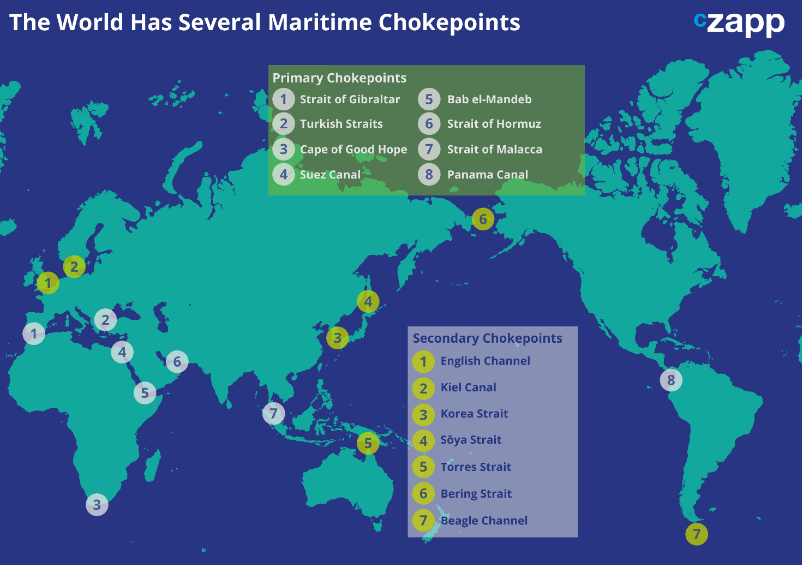
But now water levels and rainfall are also creating bottlenecks for global trade given the concentration of goods that is shipped via just a handful of key waterways. Some routes like the Rhine are beginning to recover from low water levels but others continue to experience disruptions to operations.
Panama Canal Sees Continued Draft Restrictions
There have been several issues at the Panama Canal in recent months related to low water levels. This is hampering vital Asia-US East Coast trade.
The water levels at the Gatun Lake are vital because they hold the water supply that allows the lock system at the Panama Canal to work. Right now, the lake’s water levels are extremely low and are set to remain low until October, according to projections from the Panama Canal Authority.
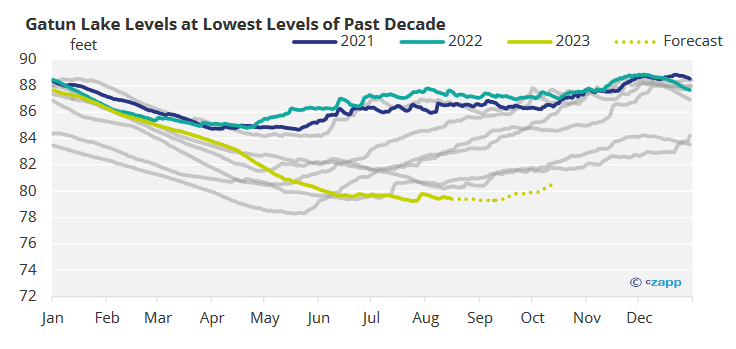
Source: Panama Canal Authority
The Panama Canal Authority has announced that it will remain a draft of 44 feet (13.41 metres) for the rest of 2023 and into 2024 due to unpredictable weather conditions. At the same time, it has restricted the number of daily slots to 32 from 36. As a result, traffic and delays have increased.
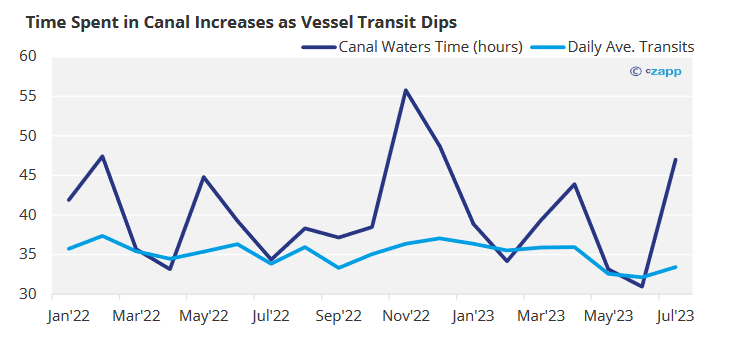
Source: Panama Canal Authority
In fact, due to the current draft restrictions, shipping firm Evergreen recently faced issues after its Ever Max vessel, with a 17,312 TEU (twenty-foot equivalent unit) capacity, was forced to unload some of its cargo before entering the Panamax locks since its draft exceeded 50 feet.
Rhine River Struggles at Kaub
It is not just the Panama Canal that is experiencing weather related bottlenecks. In Europe, the water levels at critical parts of the Rhine reached critical levels last month, creating delays and disruption. The measuring station at the town of Kaub is considered a decisive water level measurement given that it is located at the shallowest part of the Middle Rhine and is a crossing point for freight from the North Sea to reach southwest Germany.
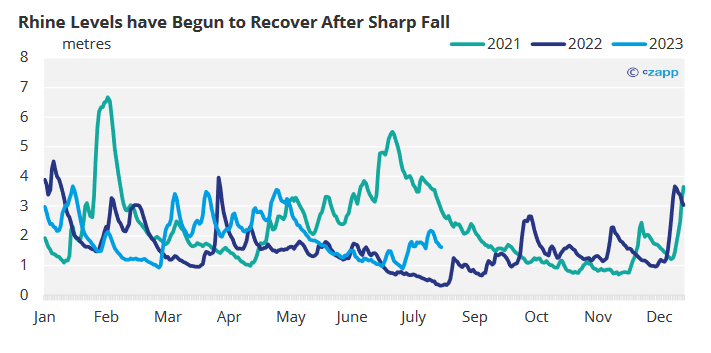 The inland waterways of the Rhine are important for shipping energy products, but they also host a significant volume of fertilisers and grains. Germany and Switzerland alone reported over $6.5 billion in trade of food products and $119.4 million in fertilizer trade in 2022 via the Rhine, according to UN Comtrade data.
The inland waterways of the Rhine are important for shipping energy products, but they also host a significant volume of fertilisers and grains. Germany and Switzerland alone reported over $6.5 billion in trade of food products and $119.4 million in fertilizer trade in 2022 via the Rhine, according to UN Comtrade data.
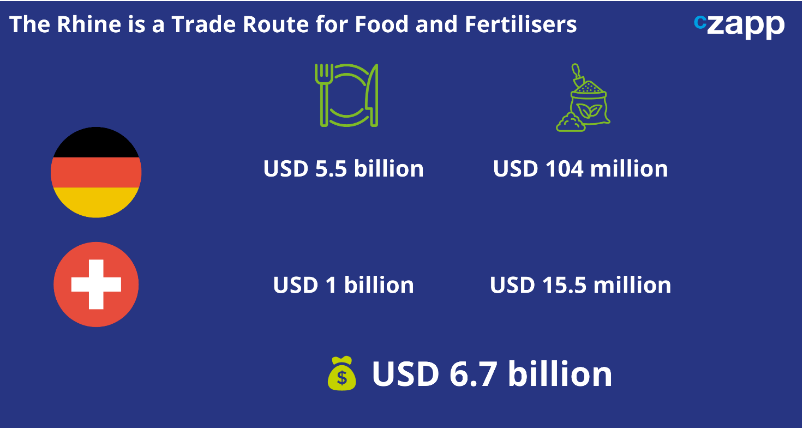
Low Rainfall Impacts Mississippi River Trade
The Mississippi River, which runs down the center of the US with major tributaries in St Louis, Memphis and New Orleans, has been experiencing low water levels for another year.
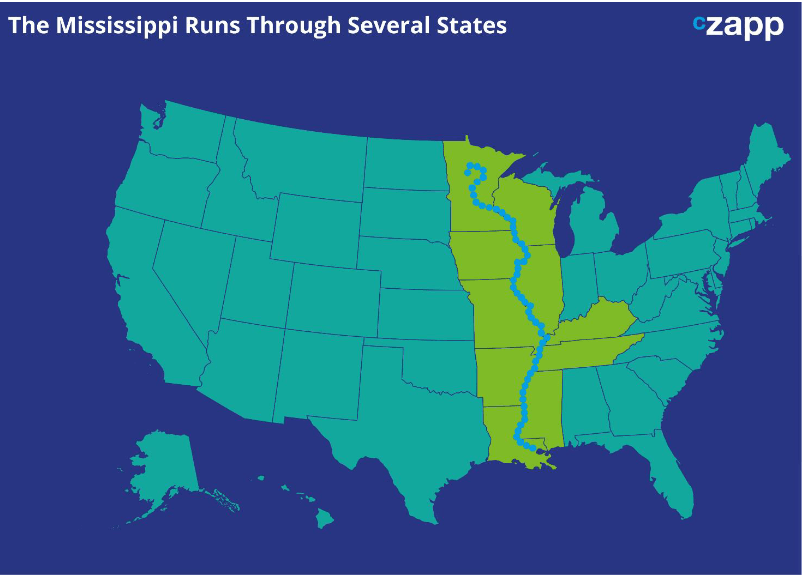
The river is a key trade route for several food commodities – mainly corn and soybeans, as well as fertilisers.
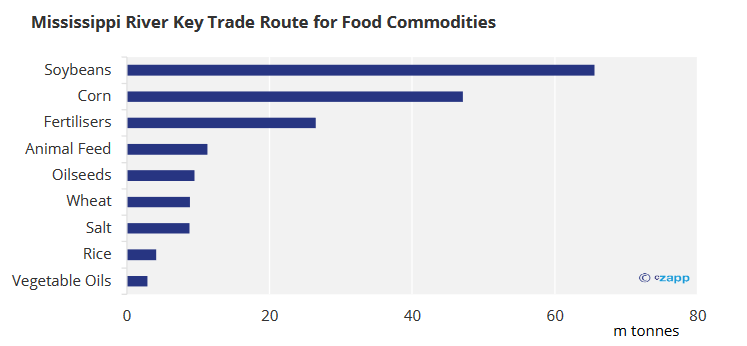
Source: US Department of Transportation
In Minnesota, where the Mississippi river starts as a tiny outlet stream, there has been low rainfall over 2022 and 2023.
 As a result, water levels are low – although are in line with levels seen in the previous two years.
As a result, water levels are low – although are in line with levels seen in the previous two years.
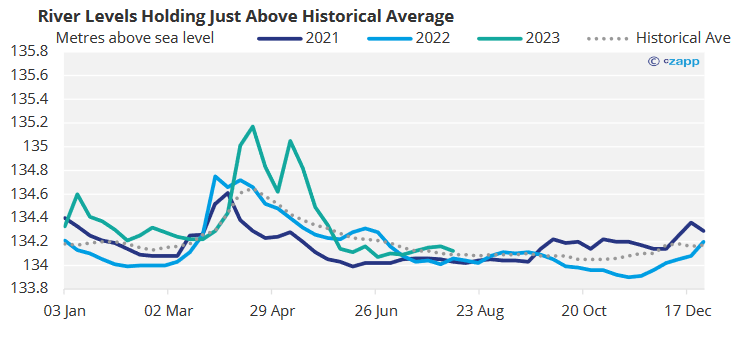
Source: Mississippi Lakes Association
At certain important points, such as New Madrid in Missouri and Memphis, water levels are low – although they have not yet reached the minimum operating limits of -5 feet and -11 feet, respectively.
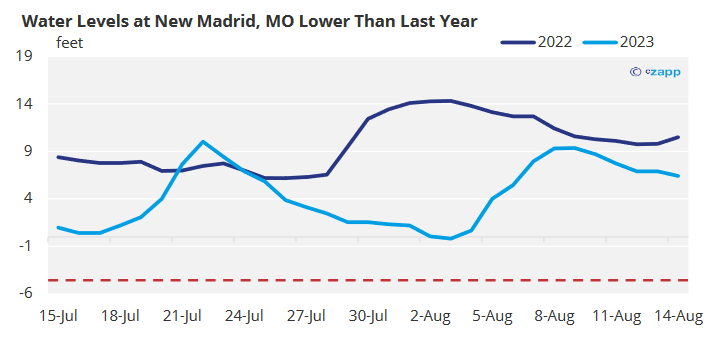 Note: Readings may be negative due to use of gage (benchmark) heights
Note: Readings may be negative due to use of gage (benchmark) heights
Source: USGS
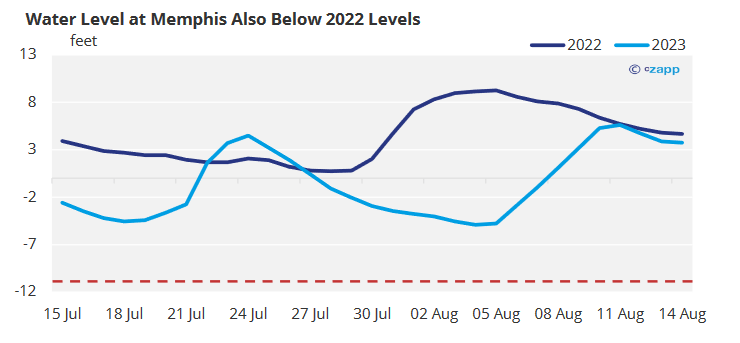 Note: Readings may be negative due to use of gage (benchmark) heights
Note: Readings may be negative due to use of gage (benchmark) heights
Source: USGS
Suez Canal Could Face Higher Traffic
The Suez Canal is a sea-level canal with no locks, so water levels and rainfall are less important. However, weather issues may still impact operations at the canal this summer as firms look to divert cargoes from the Panama Canal.
For freight originating from ASEAN and south China, a route through the Suez could be an alternative to using the Panama Canal. Although this could add 15 days onto a journey, it may still be a better option to avoid delays and uncertainty passing through Panama.
Every month, about 1,500 vessels transit the Suez Canal carrying about 1 million tonnes of goods.
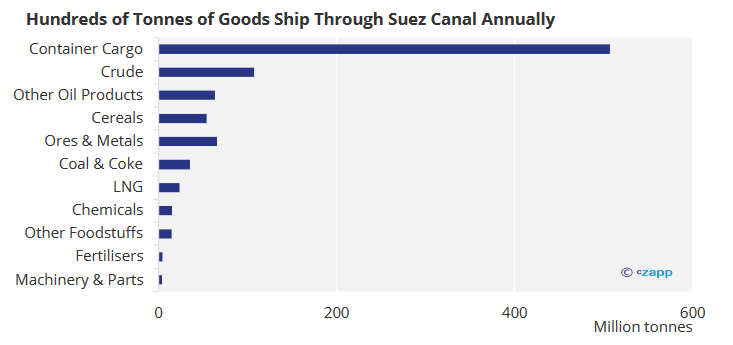 Source: Suez Canal Authority
Source: Suez Canal Authority
Concluding Thoughts
- Global goods trade relies on the ability to efficiently transit the seas and other waterways.
- Weather issues are likely to continue creating a headache for administrators of key waterways.
- Impacts such as delays, re-routing and surcharges are likely to become more common.
- To navigate these issues, companies may need to source products from multiple origins.
- Another way to avoid disruption is to employ flexible freight strategies.
For more articles, insight and price information on all things related related to food and beverages visit Czapp.












